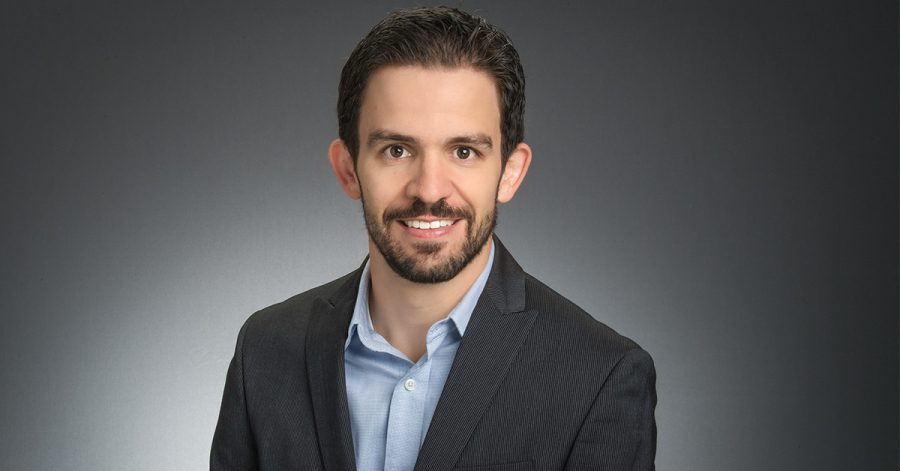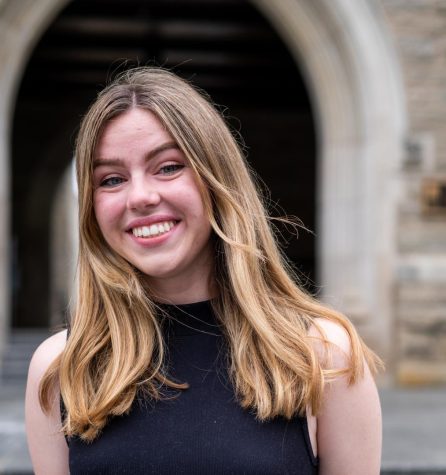Villanova Professor David Cereceda Wins Department of Energy Early Career Award
June 28, 2022
We are living amid a climate crisis. Although the effects of the crisis are blatant – the last four years were the hottest on record, and 26 million people are pushed into poverty each year because of climate related disasters – there is little action. When billions of tons of carbon dioxide are still being released into the atmosphere each year because of coal, oil and gas production, it’s easy to feel hopeless.
However, there is hope. Thousands of scientists and researchers are working tirelessly to tackle these tough energy problems and power a clean energy future. One such researcher is David Cereceda, an Assistant Professor in the Department of Mechanical Engineering at Villanova. Cereceda’s most recent piece of research, titled “Unraveling transmutation effects in tungsten-based plasma facing materials: a computational approach that integrates nuclear transmutation, first-principles calculations, and Machine Learning,” was recently funded by the Department of Energy [DOE].
For his research, Cereceda was selected by the DOE to receive approximately $750,000 over five years as a part of the DOE Office of Science’s Early Career Research Program. The program, which is in its 13th year, aims to enhance the nation’s scientific workforce by providing support to exceptional researchers early on in their careers. The DOE hopes the support will help “early career scientists…find the answers to the world’s most complex energy questions and solidify America as the driver of innovation around the world.”
The award is extremely prestigious, with awardees accepted from only 47 U.S. universities and 13 national labs this year. The awardees were accepted from a large pool of applicants. Cereceda’s award is the first one received by a researcher at Villanova.
Cereceda’s research throughout his career had always centered on materials for fusion energy application, experimenting with a wide variety of modeling approaches or techniques. Cereceda received his Ph.D. in Nuclear Engineering from Polytechnic University of Madrid in 2015. His Ph.D. research, performed at Lawrence Livermore National Laboratory and UCLA, was focused on the multiscale modeling of body-centered cubic metals like tungsten. He then became a Postdoctoral Fellow at Johns Hopkins University, within the Hopkins Extreme Materials Institute, where he investigated the dynamic fragmentation of brittle materials under extreme loading conditions.
Cereceda believes that nuclear fusion can be used to “bring the carbon-free energy of the sun to Earth, safely for everyone.”
Nuclear fusion is a naturally occurring process that powers the sun and stars. It is emerging as one of the most promising sources of clean energy: unlike fossil fuels, it emits zero greenhouse gasses, yet unlike nuclear fission, it produces no long-life radioactive waste. Its power is also more dense than other clean energy sources, like solar, and is virtually limitless.
Cereceda’s “Unraveling transmutation effects in tungsten-based plasma facing materials” research piece, for which he won the DOE Award, deals with a specific challenge posed by bringing nuclear fusion power to Earth.
“If we want to bring the powerful fusion energy of the sun to Earth safely, we need materials to withstand such extreme environments. In our project, what we’re trying to understand is the behavior of plasma-facing materials when exposed to the bombardment of energetic neutrons, which change the nuclide composition over time via transmutation reactions,” Cereceda said.
The most exciting part of receiving the DOE award, for Cereceda, is not simply the recognition of his research.
“It’s about having the resources to do the research,” Cereceda said. “With the support of this award money, our research group can grow to keep generating exciting scientific advances in the emerging field of fusion energy materials.”
He hopes to use the funding to expand his research, not only to understand how a fusion power plant changes the properties of materials, but how to inversely design materials that will be able to withstand the plasma facing interactions needed to make nuclear fusion energy possible on Earth.
Cereceda explained the crucial role of his team in his winning award. “I could not have made it without the support of Dr. Amanda Grannas’s office, Emily Carson and VIRS’ leadership, Martha O’Connor, Andrew Kunitskiy and their team at OG&C, and of course, the continuous support from my Department and Department Chair Sridhar Santhanam,” he said.
Making the award even more impressive is that Cereceda does not do his research at a classified R1 (Tier 1 Research) university. Villanova is classified as an R2 (Tier 2 Research) university, yet it competes with universities with far higher funding.
“We’re the underdogs when we compete with R1 institutions and National Labs for these Awards,” Cereceda said. “It’s exciting to be at Villanova, as we truly value teaching and we are also trying to significantly grow in our research. I am thrilled to be part of an institution with the positive energy to catch that wave.”



